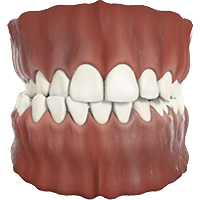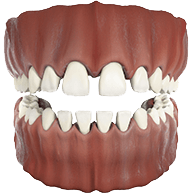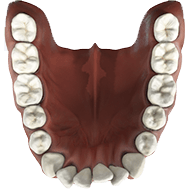In the UK, determining when a child may need braces involves several considerations, including age, dental development, and specific orthodontic issues. Here’s a detailed overview of the appropriate age for orthodontic assessments and treatments:
Typical Age for Braces in the UK
Initial Assessment (Around Age 7)
The British Orthodontic Society recommends that children have their first orthodontic evaluation by age 7. At this age, many children have a mix of primary (baby) teeth and permanent teeth, allowing orthodontists to assess the development of the bite and identify any potential issues.
Early assessments can help detect problems such as crowding, crossbites, or jaw alignment issues. If necessary, early intervention can be implemented to guide proper dental development.
Ideal Age for Treatment (Ages 10-14)
Most children in the UK receive braces between the ages of 10 and 14, typically when most of their permanent teeth have erupted. This is often the most effective time for treatment, as the jaw is still growing, making adjustments easier.
Many orthodontic issues can be more efficiently addressed during this developmental stage.
Factors Influencing the Need for Braces
Common Dental Issues:
Crowding: Insufficient space for teeth can lead to misalignment.
Overbite/Underbite: Significant discrepancies between the upper and lower teeth can necessitate braces.
Crossbite: When the upper teeth do not fit properly over the lower teeth, braces can correct this misalignment.
Spacing: Gaps between teeth may also require orthodontic treatment.
Growth and Development:
Each child’s growth pattern is unique. Orthodontists consider the child’s dental and skeletal development when recommending treatment. Some may benefit from early intervention, while others may be advised to wait until more permanent teeth have come in.
Individual Considerations:
Factors such as the child’s dental health, cooperation with treatment, and specific orthodontic needs will influence when braces might be necessary.
Types of Braces
Traditional Metal Braces
Traditional metal braces consist of brackets, wires, and bands that work together to straighten teeth and correct bite issues. The brackets are attached to the front of the teeth, and the archwire connects them, applying consistent pressure to move the teeth into the desired position. Adjustments are made periodically by an orthodontist to guide the teeth throughout the treatment process.
Benefits:
Effective for Complex Cases: Ideal for severe crowding, gaps, and bite issues, ensuring precise tooth movement.
Durability: Made from high-quality stainless steel, they are strong and resistant to breakage, suitable for active children.
Consistent Results: Regular adjustments by an orthodontist ensure steady progress toward treatment goals.
No Compliance Issues: Fixed to the teeth, eliminating the need for children to remember to wear them.
Customisation Options: Children can personalise their braces with colourful elastics, making the experience more enjoyable.
Improved Oral Health: Correcting misalignment leads to better cleaning and reduced risk of cavities and gum disease.
Comprehensive Treatment: Addresses both cosmetic and functional issues, enhancing overall oral health.
Proven Track Record: A reliable and trusted option with a long history of successful outcomes.
Ceramic Braces
Ceramic braces function similarly to metal braces but use clear or tooth-coloured brackets made from ceramic material. This makes them less noticeable than metal braces, offering a more aesthetically pleasing option for orthodontic treatment. The brackets are bonded to the front of the teeth, and an archwire connects them, exerting pressure to move the teeth into alignment.
Benefits:
Aesthetic Appeal: Less visible than metal braces, ceramic braces are tooth-coloured, making them more discreet.
Effective for Various Cases: Suitable for correcting a wide range of orthodontic issues, providing reliable results.
Durability: Modern ceramic brackets are designed to withstand typical wear, offering sufficient strength for most treatments.
Fewer Stains: Many ceramic braces resist staining, maintaining their appearance throughout treatment.
Comfort: Smoother surfaces reduce irritation to gums and cheeks, enhancing comfort for the wearer.
Customisation Options: Can be paired with coloured or clear elastic bands, allowing for personalisation and style.
Improved Oral Health: Correcting alignment issues helps enhance oral hygiene and reduce the risk of cavities and gum disease.
Comprehensive Treatment: Addresses both aesthetic and functional dental concerns, improving overall oral health.
Lingual Braces
Lingual braces are a type of orthodontic treatment that involves attaching brackets and wires to the back (lingual side) of the teeth, making them virtually invisible from the front. This option offers a discreet way to straighten teeth while maintaining effective orthodontic treatment.
Benefits:
Discreet Appearance: Virtually invisible as they are placed on the back of the teeth, making them ideal for self-conscious children.
Effective for Various Issues: Suitable for treating crowding, spacing, overbites, and underbites, similar to traditional braces.
Customised Fit: Tailored to the unique shape of each patient’s teeth, leading to efficient treatment.
Comfort: Smaller brackets often result in less irritation to the cheeks and gums.
No Impact on Oral Hygiene: Their placement allows for better motivation to maintain clean teeth without visual interference.
Comprehensive Treatment: Addresses both aesthetic and functional dental concerns.
Suitable for All Ages: Effective for children, teens, and adults, providing versatility in orthodontic options.
Proven Effectiveness: Long history of successful outcomes, similar to traditional braces.
Invisalign
Invisalign is a modern orthodontic treatment that uses a series of clear, removable aligners to gradually straighten teeth. Unlike traditional metal braces, Invisalign aligners are nearly invisible, making them a popular choice for both adults and children. The treatment involves creating a custom set of aligners based on a 3D digital scan of the patient’s teeth, which are then worn for about 20-22 hours a day, switching to a new set every one to two weeks
Benefits:
Aesthetic Appeal: The clear aligners are discreet, boosting confidence during treatment.
Comfort: Made from smooth plastic, they are generally more comfortable than metal braces, reducing irritation.
Removability: Aligners can be easily removed for eating, drinking, and oral hygiene, making it easier to maintain clean teeth.
Fewer Office Visits: Invisalign usually requires fewer orthodontist appointments for adjustments compared to traditional braces.
Reduced Treatment Time: In some cases, treatment can be shorter than with traditional braces, depending on the dental issues.
Customisable Treatment: Each aligner is tailored to the child’s specific needs for precise tooth movement.
Improved Oral Health: Removable aligners allow for better oral hygiene, reducing the risk of cavities and gum disease.
Long-Term Benefits: Early treatment can prevent more severe dental issues later, contributing to better overall oral health and self-esteem.
Factors to Consider
When deciding which braces are best for your child, consider the following factors:
- Severity of the orthodontic issue
- Budget
- Aesthetic preferences
- Lifestyle and oral hygiene habits
Consultation with an Orthodontist
To determine the most suitable type of braces for your child, it’s essential to schedule a consultation with an experienced orthodontist. They will assess your child’s specific needs and recommend the most appropriate treatment plan.
Conclusion
Choosing the right braces for your child involves careful consideration of various factors. By weighing the options and seeking professional guidance, you can ensure that your child receives the most suitable braces to achieve a healthy, beautiful smile.
Ensuring the oral health of your child is vital, and sometimes that means considering orthodontic treatment. If your child needs braces, you may be wondering which type is best for them. With various options available, it’s essential to understand the differences between each type to make an informed decision.













